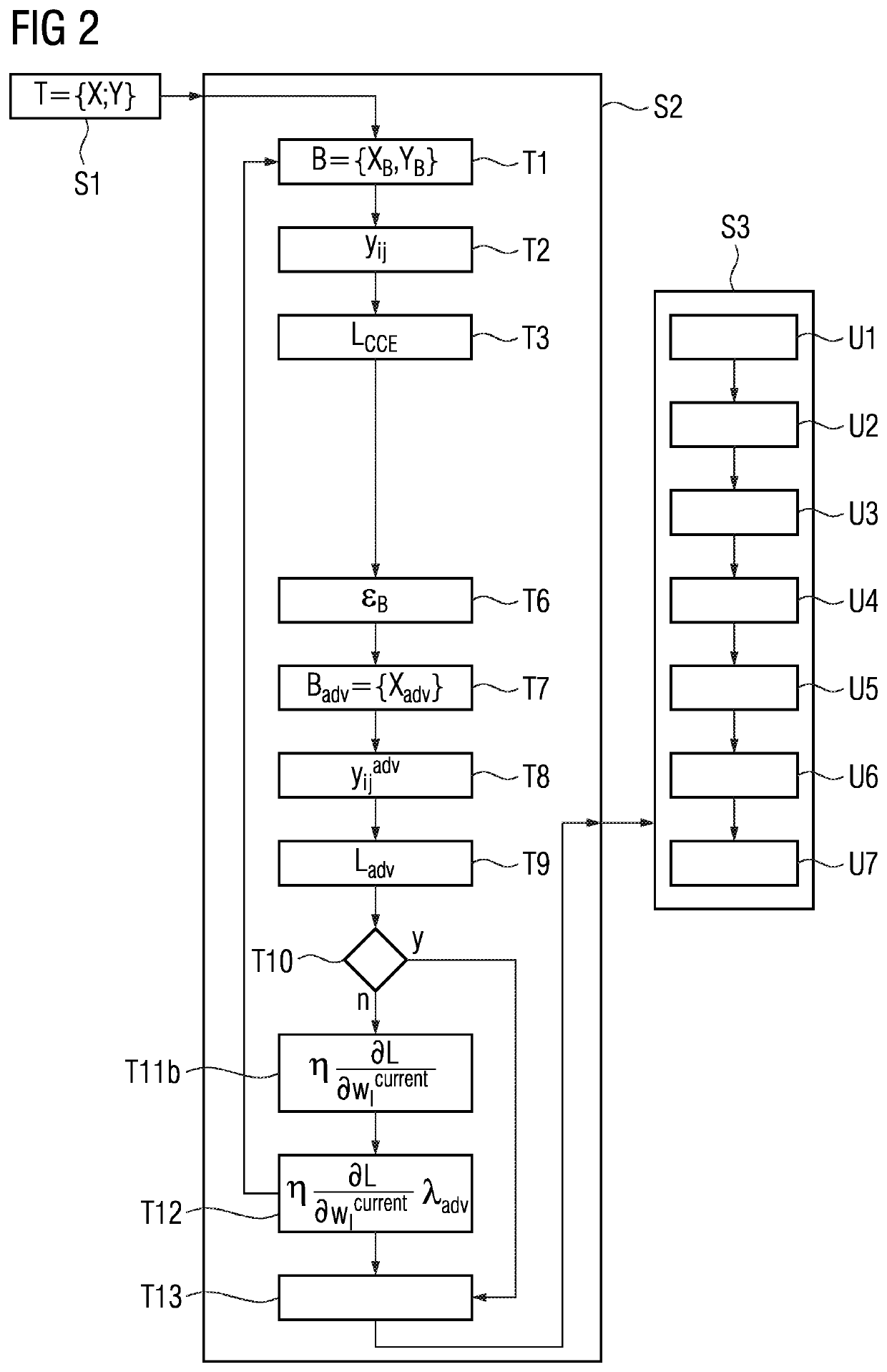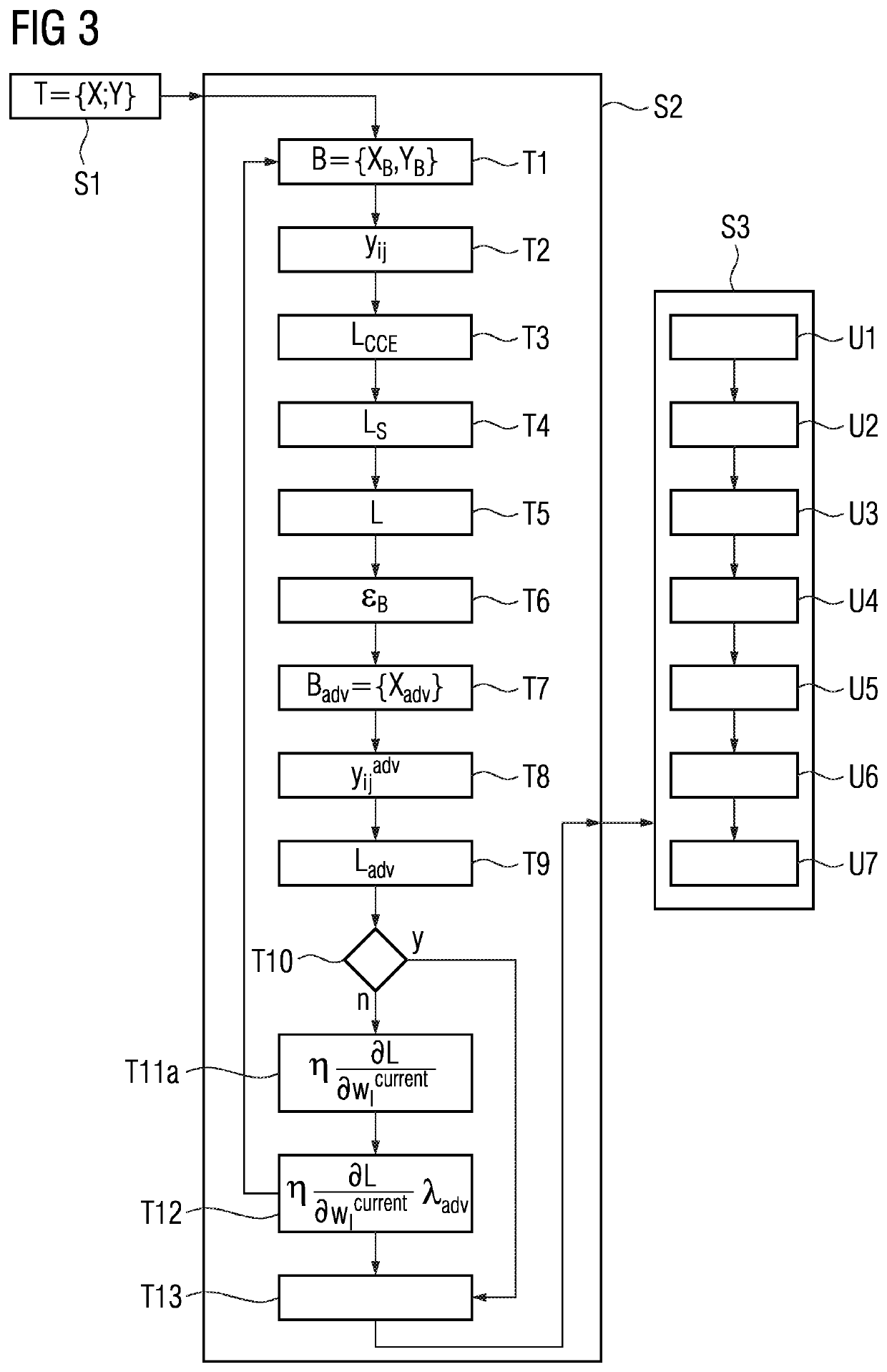Transforming a trained artificial intelligence model into a trustworthy artificial intelligence model
a technology of artificial intelligence and model, applied in the field of computerimplemented methods and systems for transforming a trained artificial intelligence model into a trustworthy artificial intelligence model, can solve the problems of model encountering erroneous and inconsistent inputs, model distribution may gradually move away from the distribution of training data, and high cost of labeling
- Summary
- Abstract
- Description
- Claims
- Application Information
AI Technical Summary
Benefits of technology
Problems solved by technology
Method used
Image
Examples
first embodiment
[0169]The first embodiment refers to the web service details of the proposed method. A transformation method for a trained AI model is described as part of a web service, which is accessible via a webpage. Just for example, the trained AI model might be generated based on a trained NN that was trained with any of the methods according to the aspects described above. The method is illustrated with FIG. 7, which is described in more detail in the following.
[0170]A user 100 for example accesses a webpage. The front end 20 of the webpage is for example realized via a web app, e.g. Elastic Beanstalk, which fetches an AWS EC2 instantiation. The web app askes the user 100 to upload a trained neural network, for example with weights exported in a pre-specified format, e.g. hdf5. In addition, it askes to provide a representative validation data set. These user data D10 is provided by the user 100 via the user interface and front end 20, which forwards it to a cloud platform 200.
[0171]Accordi...
third embodiment
[0187] which is illustrated in FIG. 10, the same classifier is used, but the underlying AI classification model has been transformed into a trustworthy AI model with the following method.
[0188]A set of samples are generated which cover the entire spectrum from in-domain samples to truly out-of-domain samples in a continuous and representative manner. According to this, the fast gradient sign method (FGSM) is used on the basis of the validation data set with sample pairs to generate perturbated samples, with varying perturbation strength. More specifically, for each sample pair in the validation data set, the derivative of the loss is determined with respect to each input dimension and the sign of this gradient is recorded. If the gradient cannot be determined analytically (e.g. for decision trees), it can be resorted to a 0th-order approximation and the gradient can be determined using finite differences. Then, noise $epsilon$ is added to each input dimension in the direction of its...
PUM
 Login to View More
Login to View More Abstract
Description
Claims
Application Information
 Login to View More
Login to View More - R&D
- Intellectual Property
- Life Sciences
- Materials
- Tech Scout
- Unparalleled Data Quality
- Higher Quality Content
- 60% Fewer Hallucinations
Browse by: Latest US Patents, China's latest patents, Technical Efficacy Thesaurus, Application Domain, Technology Topic, Popular Technical Reports.
© 2025 PatSnap. All rights reserved.Legal|Privacy policy|Modern Slavery Act Transparency Statement|Sitemap|About US| Contact US: help@patsnap.com



